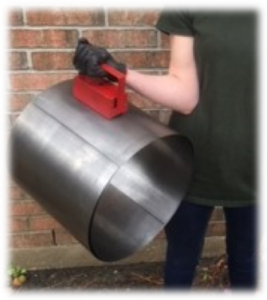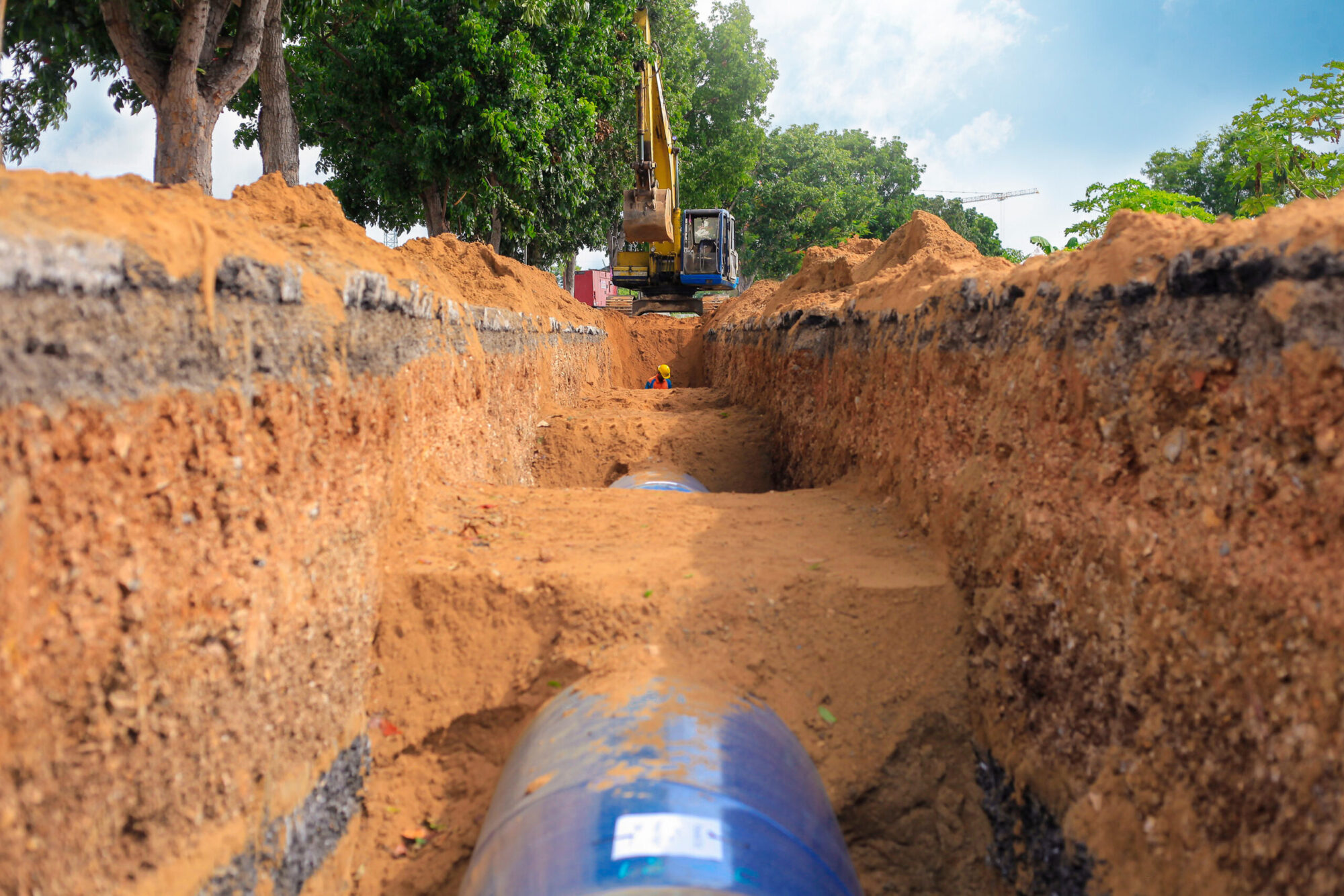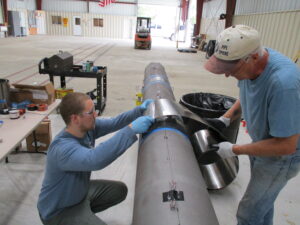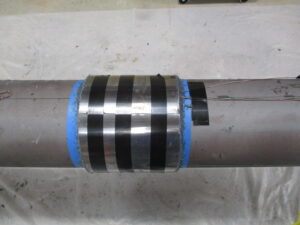 Question: How does Pipe Spring™ compare to composite repairs?
Question: How does Pipe Spring™ compare to composite repairs?
Answer: Pipe Spring™ utilizes material, steel, to wrap around the pipe. Composites utilize material, thermoset resin reinforced by fibers, to wrap around the pipe. The reinforcement mechanisms and concepts are similar.
Composites are best thought of as thixotropic material. The resin and fibers can move and change over time. They are known to display a degradation in mechanical properties over time particularly when exposed to specific environmental conditions or to various chemicals. Composites can be designed to be very anisotropic and have very different strength in various directions. For pipeline applications, two broad categories of composites are common:
- Pre-cured laminated composites applied in the field with adhesives systems
- Wet applied systems that are comprised of a strength member (fibers) and a thermoset resin which is wet when applied.
A properly designed repair must be based on the degraded or long-term failure strength of the composite material. The degradation during service life of the effective modulus of elasticity of composite repairs remains an area of some controversy related to long term effectiveness.
Pipe Spring™ is not a composite repair. However, it is installed in a similar fashion to the pre-cured laminated composite systems. Recent advances in technology have enable a minimization of field variables and simplification of installation. Efforts have been made to make the installation system as quick, simple, and repeatable as possible. This is intended to save operators time and money and result in excellent quality installations. Wet applied composites systems can require specific skills and experience for effective long term repairs. This can result in greater installation costs. The isotropic, homogeneous, and non-degrading material properties of steel result in thinner repairs. The axial strength provided can be calculated in addition to the traditional hoop stress models. The fracture toughness of the Pipe Spring™ steel sleeve is extraordinarily high due to the thin-layers and laminated design. This property is beneficial for mitigation of future potential mechanical damage.
Additionally, for Strained based concerns, Pipe Spring™ significant advantages:
- Axial strength
- Non-degradation of material properties during service life (strength and modulus)
- Initial stress/strain response
- Improved bulk effective modulus of elasticity.
- Cyclical performance of adhesive system (10 million cycles)
Question: How does Pipe Spring™ compare to welded steel sleeves?
Answer: Pipe Spring™ is a modern version of a “Type A” sleeve with the welding eliminated and adhesive utilized to hold the sleeve together. “Type B” sleeves have circumferential fillet welds at the end of each sleeve to join the pipe body and sleeve as one welded unit. “Type B” sleeves are sometimes utilized when leaks are projected to become a threat. The fillet welds are intended to contain the potential leak.
Some operators decline to utilize “Type A” sleeves, as they provide no axial strength and they would not contain pressure in the event of a leak. Some operators decline to utilize “Type “B” sleeves due to concerns related to metallurgical effects of welding on vintage pipe often with thinned walls due to external and/or internal corrosion. There are also safety concerns related to burn thru via high temperature welding arcs.
Some operators prefer to avoid welding “on” or “to” the pipe at all based on safety concerns related the welding process near the product being transported within the pipe. Welded steel sleeves can also be quite thick and heavy and require significant material handling and welding time. They may also require delayed weld inspection. Welded steel sleeves can be expensive to install and difficult to achieve the necessary quality desired. Fit up issues related to ovality or the presence of longitudinal welds also create a list of specific concerns. The welds created to hold the welded steel sleeves together can ultimately be the limiting life factor related to cyclical performance.
Pipe Spring™ provides the known behavior and properties of steel while eliminating the need to weld.


 Question: Is Pipe Spring™ approved by PHMSA?
Question: Is Pipe Spring™ approved by PHMSA? Question: How does Pipe Spring™ compare to composite repairs?
Question: How does Pipe Spring™ compare to composite repairs? 
 t is Pipe Spring™?
t is Pipe Spring™?